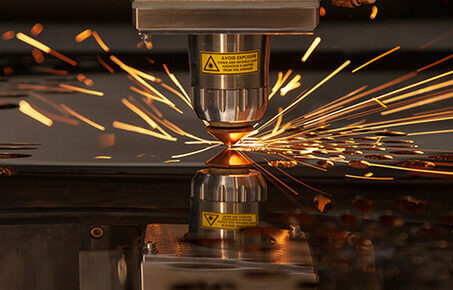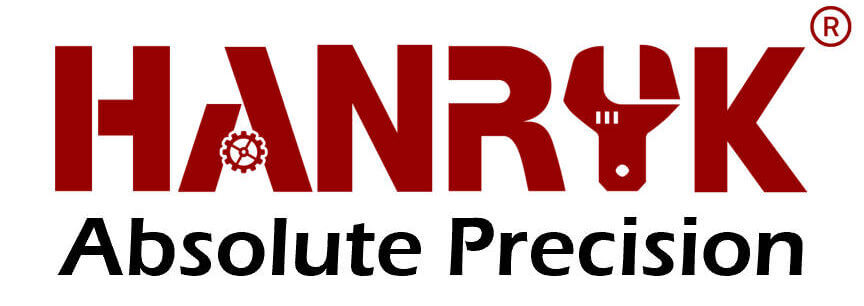使用激光切割进行零件制造时要避免的常见错误
- by Hanryk® Team
- March 6, 2022
Laser cutting is a popular method for parts manufacturing due to its high precision and speed. However, like any manufacturing process, it is not without its challenges. There are a few common mistakes that companies often make when using laser cutting for parts manufacturing that can lead to wasted time, money, and resources. In this article, we will explore some of the most common mistakes and how to avoid them.

Laser cutting is a popular method for parts manufacturing due to its high precision and speed. However, like any manufacturing process, it is not without its challenges. There are a few common mistakes that companies often make when using laser cutting for parts manufacturing that can lead to wasted time, money, and resources. In this article, we will explore some of the most common mistakes and how to avoid them.
Mistake #1: Using the Wrong Laser Cutting Settings
One of the most common mistakes in laser cutting is using the wrong cutting settings. Cutting settings refer to the power, speed, and focus of the laser beam. If the settings are not calibrated correctly, the result may be a cut that is too shallow, too deep, or not clean enough.
Table 1: Recommended laser cutting settings for common materials
|
材料 |
Power (W) |
Speed (in/min) |
Focus (in) |
|
不锈钢 |
500-1000 |
40-100 |
0.008-0.012 |
|
铝合金 |
500-1000 |
100-200 |
0.010-0.014 |
|
Acrylic |
60-80 |
10-20 |
0.006-0.008 |
|
Wood |
100-150 |
20-30 |
0.008-0.010 |
As shown in Table 1, different materials require different laser cutting settings. It is important to select the appropriate settings for the material being cut to ensure a clean and precise cut.
Mistake #2: Poor Material Handling
Another common mistake in laser cutting is poor material handling. If the material is not secured correctly, it may move during the cutting process, leading to inaccurate cuts or damage to the material. Material handling is especially important when cutting thin or lightweight materials.
Table 2: Material thickness and recommended securing methods
|
Material Thickness (in) |
Securing Method |
|
< 0.125 |
Vacuum Table |
|
0.125-0.25 |
Tape or Clamps |
|
> 0.25 |
Magnetic Chucks |
As shown in Table 2, different material thicknesses may require different securing methods. It is important to select the appropriate securing method for the material being cut to ensure that it remains in place during the cutting process.
Mistake #3: Ignoring Maintenance and Calibration
Laser cutting machines require regular maintenance and calibration to ensure that they are functioning properly. Ignoring maintenance and calibration can lead to poor cutting quality, damage to the machine, and increased downtime.
Table 3: Recommended maintenance and calibration schedule for laser cutting machines
|
Maintenance/Calibration |
Frequency |
|
Clean the optics |
Daily |
|
Replace the nozzle |
Weekly |
|
Clean the lens |
Weekly |
|
Calibrate the beam |
Monthly |
|
Replace the filter |
Quarterly |
As shown in Table 3, regular maintenance and calibration of laser cutting machines is essential for ensuring their proper operation. It is important to follow a maintenance and calibration schedule to prevent downtime and ensure that the machine is operating at peak efficiency.
Conclusion
Laser cutting is a powerful tool for parts manufacturing, but it is not without its challenges. By avoiding common mistakes such as using the wrong cutting settings, poor material handling, and ignoring maintenance and calibration, businesses can ensure that they are getting the most out of their laser cutting process. Implementing these best practices can help to minimize waste, reduce downtime, and increase overall efficiency.
It is important to note that the specific best practices and laser cutting settings may vary depending on the specific material being cut and the particular laser cutting machine being used. It is recommended that businesses consult with an expert in laser cutting and machine operation to ensure that they are following the best practices and utilizing the most effective settings for their specific needs.
In summary, laser cutting is an efficient and precise method for parts manufacturing, but it requires careful attention to detail and proper handling. By avoiding common mistakes and implementing best practices, businesses can ensure that they are maximizing the benefits of this powerful technology.

